When it comes to enjoying the immersive world of music or diving deep into a podcast, using in-ear headphones can truly enhance your audio experience. These small and portable companions offer convenience and crystal-clear sound, allowing you to stay connected to your favorite tunes wherever you go. However, like all good things, there can be a downside.
Have you ever experienced discomfort or even pain while using your in-ear headphones? Perhaps you've had moments where the relentless pressure on your ears made you question whether the pleasure of listening to your favorite tracks was worth the discomfort. If you've encountered these discomforts, worry not; we're here to help you find the ultimate solution for mitigating those ear pains.
Discover the Secrets to Comfortable Listening
Whether you're an avid music enthusiast, a fitness enthusiast wanting to stay motivated during workouts, or simply using in-ear headphones for their noise-canceling abilities, ensuring your listening sessions are pain-free is essential. In this article, we will uncover the lesser-known secrets to enjoying a comfortable listening experience, so you can indulge in your favorite audio without worrying about any potential discomfort.
From optimizing the fit of your earbuds to adjusting the volume and equalizer settings, we'll explore various techniques to alleviate ear pain when using in-ear headphones. Additionally, we'll guide you through the selection of the right earbud tips and share suggestions that will help you maintain optimal ear hygiene. By implementing these tips and tricks, you'll not only enhance your auditory experience but also ensure that those long listening sessions remain pleasant and pain-free.
Understanding the Origins of Discomfort Caused by In-Ear Sound Devices
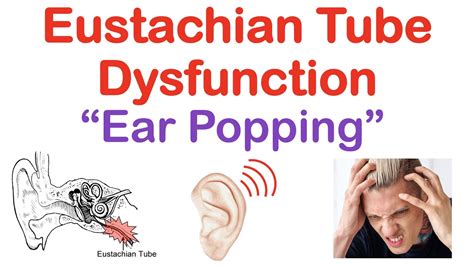
Unpleasant sensations experienced while using in-ear headphones can often be attributed to various factors that affect the delicate structures of the ear. Gaining insights into the underlying causes of ear discomfort when using such audio devices is essential in finding suitable solutions.
Ear canal sensitivity: For individuals with heightened sensitivity in the ear canal, even the gentlest pressure from in-ear headphones can lead to discomfort. The tight fit of these devices may cause irritation and discomfort in individuals with particularly sensitive ear canals.
Earwax accumulation: Excessive earwax buildup can hinder the proper insertion of in-ear headphones and may lead to pain and discomfort. When earwax pushes against the ear canal or gets trapped inside the earphone, it can cause pressure and irritation.
Ear infections: Infections within the ear, such as otitis externa or swimmer's ear, can result in ear pain when using in-ear headphones. The inflammation and tenderness associated with these infections can be exacerbated by the presence of the headphones, exacerbating the discomfort.
Ear anatomy: The shape and size of an individual's ear may contribute to discomfort while wearing in-ear headphones. Variations in ear canal structure can cause headphones to fit improperly or create pressure points, resulting in pain or discomfort over extended periods of use.
Excessive volume and prolonged use: Listening to music or audio at high volumes for an extended period with in-ear headphones can lead to discomfort. The excessive noise and duration of use can put strain on the delicate structures of the inner ear, leading to pain or even temporary hearing loss.
Individual sensitivity: Each person's tolerance to pressure and contact within the ear can vary. Some individuals may experience discomfort even with properly fitted in-ear headphones. This individual sensitivity can be influenced by factors such as previous ear injuries, medical conditions, or personal pain thresholds.
Understanding the potential culprits behind ear pain caused by in-ear headphones allows for a more comprehensive approach in addressing this discomfort. By identifying these factors, appropriate remedies and preventative measures can be taken to ensure a comfortable and enjoyable listening experience.
Choosing the Right Size and Type of Ear Tips
Ensuring comfort and proper fit with your headphones is essential to prevent discomfort or pain. One crucial factor to consider is selecting the appropriate size and type of ear tips.
When it comes to ear tips, it is important to find the ones that best suit your ears and deliver optimal sound quality. Choosing the correct size is crucial in achieving a secure fit, as ill-fitting ear tips can cause discomfort or even lead to pain during extended usage. Therefore, it is essential to determine the right size of ear tips for your ears.
Another aspect to consider is the type of material used for the ear tips. Different materials such as silicone, foam, or rubber can impact both comfort and sound quality. Silicone ear tips are popular for their flexibility and ability to create a seal, providing better noise isolation and bass response. Foam ear tips, on the other hand, offer excellent noise isolation and are known for their comfort and custom fit when they expand inside the ear canal.
Additionally, it is worth considering the shape of the ear tips. Some ear tips have a round shape, while others have an oval or contoured design. The shape of the ear tips can affect the comfort and fit, so it's recommended to try different shapes to find the one that suits your ears best.
Lastly, experimenting with different brands and models of ear tips can also be helpful. Each manufacturer may have subtle variations in the design or material, allowing you to find the perfect fit for your ears and minimize any discomfort or pain while using in-ear headphones.
Adjusting the Fit of In-Ear Headphones
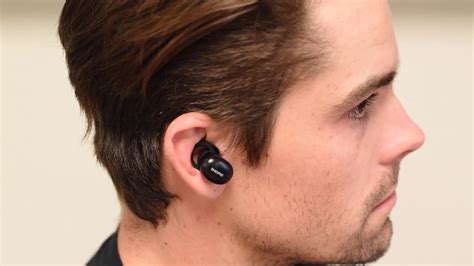
Ensuring a comfortable and secure fit is crucial when using in-ear headphones to minimize any discomfort that may arise during extended periods of use. Properly adjusting the fit of your headphones can help alleviate any potential discomfort and improve the overall listening experience.
When it comes to adjusting the fit, it is important to find the right balance between a snug fit and avoiding excessive pressure on the delicate structures of the ear. By finding the optimal fit, you can reduce the likelihood of pain, pressure, or irritation that may be caused by ill-fitting headphones.
Find the right size: In-ear headphones often come with multiple sizes of ear tips. Experiment with different sizes to find the ones that fit your ears best. The correct size should create a seal without causing any discomfort or pressure.
Insertion angle: It is necessary to insert the ear tips at the correct angle for a secure fit. Gently pull your earlobe outward to straighten the ear canal, and insert the ear tips with a twisting motion until they fit snugly. Avoid pushing them in too forcefully, as it can cause discomfort.
Secure the cable: Make sure the cable is placed correctly to prevent tugging or pulling on the earbuds. You can loop the cable behind your ear or use clips to secure it in place, ensuring a more stable and comfortable fit.
Take breaks: Even with a proper fit, it's important to give your ears regular breaks from using in-ear headphones. Extended periods of use can lead to fatigue and discomfort, so take short breaks in between listening sessions to allow your ears to rest and recover.
Note: Remember that everyone's ears are unique, so it may take some trial and error to find the perfect fit. Don't hesitate to experiment with different techniques and sizes until you achieve a comfortable and pain-free listening experience.
Taking Breaks and Limiting Usage Time
One effective way to prevent discomfort caused by in-ear headphones is to establish a routine that includes taking regular breaks and limiting the amount of time spent using them. By incorporating these practices into your daily routine, you can minimize the risk of experiencing ear pain and other related issues.
1. Take regular breaks: Giving your ears regular breaks from in-ear headphones can help prevent discomfort and reduce the strain on your ears. Consider removing the headphones and taking short breaks every hour or so to give your ears a chance to rest and recover.
2. Limit usage time: Limiting the amount of time you spend using in-ear headphones can also play a significant role in alleviating discomfort. Try to set a maximum duration for using them each day and be mindful of adhering to this limit. This will give your ears sufficient time to recover and reduce the risk of pain and discomfort.
3. Practice good listening habits: In addition to taking breaks and limiting usage time, practicing good listening habits can also help alleviate ear pain. Keep the volume of your in-ear headphones at a reasonable level and avoid turning it up too high. Additionally, try to avoid using them in noisy environments or situations where you need to strain to hear the audio, as this can contribute to discomfort.
4. Rotate between different headphones: Another helpful tip is to rotate between different types of headphones to avoid prolonged and repetitive pressure on the ear canal. Switching between in-ear headphones, over-the-ear headphones, or earbuds can help distribute the pressure more evenly and reduce the chances of discomfort.
5. Keep your headphones clean: Regularly cleaning your in-ear headphones is essential for maintaining their hygiene and preventing discomfort. Use a soft cloth or cotton swab to gently wipe the earbuds and remove any dirt, wax, or debris that may have accumulated. This will not only improve sound quality but also reduce the chances of discomfort.
By implementing these practices and being mindful of your ears' health, you can mitigate the risk of ear pain and discomfort associated with using in-ear headphones.
Cleaning and Maintaining In-Ear Sound Devices
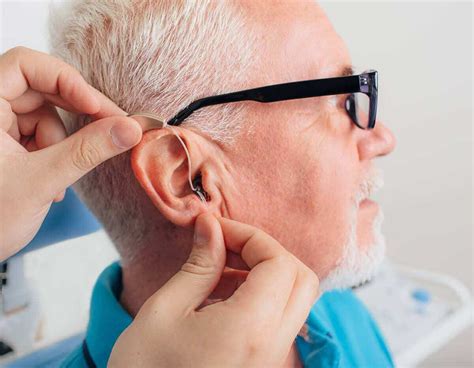
Proper care and maintenance of your in-ear sound devices is essential for ensuring optimal performance and longevity. Regular cleaning helps to remove dirt, debris, and earwax buildup, which can not only affect sound quality but also contribute to discomfort or pain during use.
When it comes to keeping your in-ear sound devices in top condition, there are a few key steps you can take. Firstly, make sure to regularly wipe down the exterior surfaces of the devices with a soft, lint-free cloth. This will help remove any dust or dirt that may have accumulated. For more stubborn buildup, you can lightly dampen the cloth with a mild cleaning solution specifically designed for electronic devices.
Next, it's important to clean the ear tips or cushions that come into direct contact with your ears. Depending on the type of in-ear sound devices you have, the ear tips may be removable or permanently attached. Removable ear tips can usually be cleaned by gently detaching them from the devices and washing them with mild soap and warm water. Allow them to dry completely before reattaching them.
If your ear tips are permanently attached, you can still clean them by using a small, soft brush or cotton swab dipped in a mixture of water and mild soap. Gently scrub the ear tips, being careful not to apply too much pressure or damage them. Rinse thoroughly and ensure they are completely dry before using them again.
In addition to regular cleaning, proper storage of your in-ear sound devices is equally important. When not in use, make sure to keep them in a clean, dry, and secure case or pouch. This will help prevent dust, moisture, and physical damage. Avoid storing them in extreme temperatures or exposing them to direct sunlight, as this can also impact their performance and durability.
By incorporating regular cleaning and proper storage practices into your routine, you can maintain the cleanliness and functionality of your in-ear sound devices. Not only will this contribute to a more comfortable listening experience, but it will also extend their lifespan, allowing you to enjoy high-quality audio for years to come.
Exploring Different Brands and Models
When it comes to finding a solution for discomfort while using in-ear headphones, one approach worth considering is trying out various brands and models. By experimenting with different options, you can potentially alleviate any discomfort and find a pair that suits your needs.
It is essential to remember that not all earphones are created equal. Each brand and model has its own unique design and fit, which can significantly impact your comfort level while wearing them. Exploring different brands and models allows you to discover which ones offer a better fit for your ears and potentially alleviate any discomfort you may experience.
Some brands may offer adjustable ear tips or different sizes to accommodate varying ear sizes. Others may have ergonomic designs that conform better to the shape of your ear, reducing pressure and discomfort. So, by trying different brands and models, you give yourself the opportunity to find a pair of in-ear headphones specifically tailored to your comfort requirements.
It is worth noting that everyone's ears are unique, and what works for one person may not work for another. Therefore, it is recommended to keep an open mind and be willing to try out different options until you find the right fit. Pay attention to factors such as the size of the ear tips, the overall shape, and the materials used in the construction of the headphones as these can all play a role in your comfort level.
In conclusion, exploring different brands and models can be an effective strategy for alleviating any discomfort experienced while using in-ear headphones. By being open to trying out various options, you increase the likelihood of finding a pair that fits well and provides a comfortable listening experience.
Enhancing Comfort with Ear Cushions or Hooks
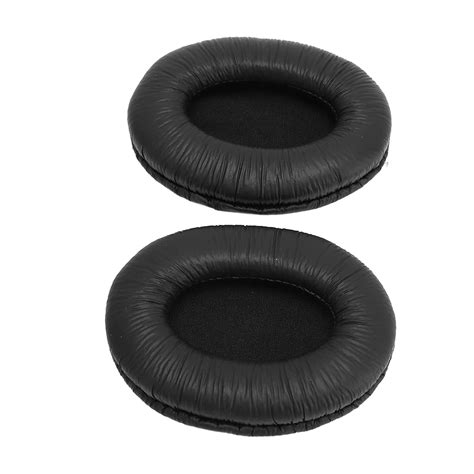
When it comes to using in-ear headphones, finding a comfortable fit is crucial for an enjoyable listening experience. One way to alleviate any potential discomfort is by incorporating ear cushions or hooks into your headphone setup. These accessories can provide added comfort and support, allowing you to listen to your favorite tunes or podcasts for extended periods without feeling any pain or discomfort in your ears.
Ear cushions are soft pads that attach to the earbuds, providing cushioning and creating a barrier between the earbuds and your ear. They come in different materials such as silicone, foam, or rubber, and can be easily attached or detached, depending on your preference. The cushions not only enhance comfort but also help to reduce the pressure exerted on your ears, making them an excellent addition to alleviate any potential discomfort.
- Silicone cushions: These are often included with in-ear headphones and offer a soft, flexible, and hypoallergenic option. They securely fit onto the earbuds and provide a gentle and comfortable seal inside the ear.
- Foam cushions: Made from memory foam or other soft materials, foam cushions conform to the shape of your ear, resulting in a snug and personalized fit. They effectively reduce external noise and provide excellent comfort.
- Rubber cushions: These cushions are durable and provide a comfortable fit. They offer a good balance between softness and firmness, ensuring a secure fit while minimizing discomfort.
Alternatively, you can consider using ear hooks or ear clips, especially if you find that the earbuds tend to slip out or feel unstable in your ears. Ear hooks are typically made of flexible materials such as silicone or rubber and are designed to loop over the back of your ears, providing additional support and stability. They help to distribute the weight of the earbuds and reduce the pressure on the ear canal, thus minimizing any potential pain or discomfort.
Before purchasing ear cushions or hooks, it is important to consider the size and shape of your ears, as well as the specific design of your in-ear headphones. Ensure that the cushions or hooks you choose are compatible with your headphones to get the best fit and comfort.
Incorporating ear cushions or hooks into your in-ear headphone setup can significantly enhance your overall comfort, allowing you to enjoy your favorite audio content without any ear pain or discomfort. Experiment with different options to find the perfect fit that works for you and enjoy a pleasant and comfortable listening experience!
Using Warm or Cold Compress to Ease Discomfort
One effective method to alleviate discomfort caused by in-ear headphones is by applying either a warm or cold compress. This technique utilizes temperature therapy to provide relief to the ears without the need for medication or invasive procedures. Depending on individual preference and the source of discomfort, a warm or cold compress can be used to soothe the affected area and promote relaxation.
- Warm Compress: Applying a warm compress to the ears can help to relax the muscles and increase blood circulation. This can be particularly beneficial for relieving tension or tightness in the ear area. To create a warm compress, soak a clean towel in warm water and wring out the excess moisture. Gently place the warm towel on the ears for a few minutes, repeating as needed.
- Cold Compress: Conversely, a cold compress can numb the affected area and reduce inflammation or swelling. This can be helpful for alleviating pain or discomfort caused by prolonged headphone use. To create a cold compress, wrap a few ice cubes in a thin cloth or place a cold gel pack in a plastic bag. Apply the cold compress to the ears for several minutes at a time, allowing for intermittent breaks.
- Precautions: It is important to exercise caution when applying temperature therapy to the ears. Avoid extreme temperatures that could cause burns or frostbite. Additionally, always ensure that the compress is not too hot or too cold before applying it to the ears. If any discomfort or adverse reactions occur, discontinue use immediately and consult a healthcare professional.
By utilizing warm or cold compresses, individuals can find relief from discomfort caused by in-ear headphones. This simple and natural method can be easily incorporated into a daily routine, providing a soothing and therapeutic experience for the ears.
Seeking Medical Advice for Persistent Ear Discomfort
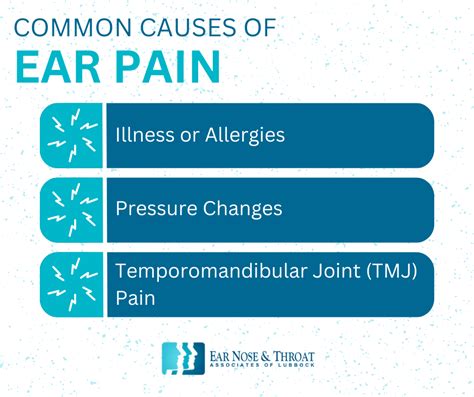
In the pursuit of optimal auditory experiences, it is not uncommon to encounter discomfort in the delicate organ of hearing. When conventional techniques fail to alleviate the unwelcome sensations, it may be prudent to consider seeking expert medical counsel for persistent ear discomfort. Consulting a medical professional can provide valuable insights, diagnosis, and appropriate treatment options to address the discomfort effectively.
When experiencing ongoing ear discomfort, it is important to recognize the significance of seeking timely medical advice. By engaging with a qualified healthcare provider, individuals can obtain a comprehensive evaluation of their specific condition. Medical practitioners possess a wealth of knowledge and expertise in diagnosing and managing ear-related concerns to offer appropriate recommendations catered to individual needs.
- Expert Diagnosis: Medical professionals are equipped to conduct a thorough examination of the ear and surrounding areas to identify potential causes of discomfort. This can include conditions such as inflammation, infection, or even the presence of foreign objects.
- Tailored Treatment: With their specialized knowledge, medical experts can devise a personalized treatment plan based on the underlying cause of the discomfort. This may involve medication, non-invasive procedures, or, in rare cases, surgical interventions.
- Prevention Strategies: Seeking medical advice provides an opportunity to discuss preventive measures and lifestyle adjustments that can minimize the risk of ear discomfort in the future. Healthcare professionals can offer valuable guidance on proper headphone usage techniques and potential alternative listening options.
Remember, persistent ear discomfort requires attention and professional evaluation. It is important to prioritize one's hearing health by seeking timely medical advice to ensure a prompt and accurate diagnosis, effective treatment, and long-term relief from any ongoing discomfort.
FAQ
What are some common causes of ear pain from in-ear headphones?
Ear pain from in-ear headphones can be caused by a few factors. One common cause is the improper fit of the earbuds, which can put pressure on the ear canal and cause discomfort. Another cause can be the volume level of the headphones, as listening to loud music for extended periods can irritate the sensitive structures in the ear. Additionally, using dirty or unhygienic earbuds can introduce bacteria into the ear, leading to pain and even infection.
How can I alleviate ear pain from in-ear headphones?
There are a few things you can do to alleviate ear pain from in-ear headphones. First, ensure that your earbuds fit properly by trying different sizes of ear tips or using custom-fit options. It's important that the earbuds create a seal without causing any discomfort. Secondly, try lowering the volume of your headphones, especially if you frequently listen to loud music. Taking breaks from using in-ear headphones and giving your ears a rest can also help alleviate pain. Lastly, make sure to clean your earbuds regularly to prevent the buildup of bacteria.
Are there any home remedies for ear pain from in-ear headphones?
Yes, there are a few home remedies that can help alleviate ear pain from in-ear headphones. One common remedy is applying a warm compress to the affected ear. The heat can help relax the muscles and alleviate any tension or discomfort. Another remedy is using over-the-counter ear drops to relieve any inflammation or irritation in the ear canal. It's important to consult a healthcare professional before using any remedies, especially if you suspect an infection or if the pain persists.
When should I seek medical attention for ear pain from in-ear headphones?
If the ear pain from in-ear headphones persists despite trying different solutions, it's advisable to seek medical attention. It's also important to see a doctor if the pain is accompanied by other symptoms such as hearing loss, discharge from the ear, or fever. These can be signs of an infection or other underlying conditions that require medical treatment. Additionally, if you have a pre-existing ear condition or a history of ear infections, it's recommended to consult a healthcare professional for proper evaluation and guidance.




